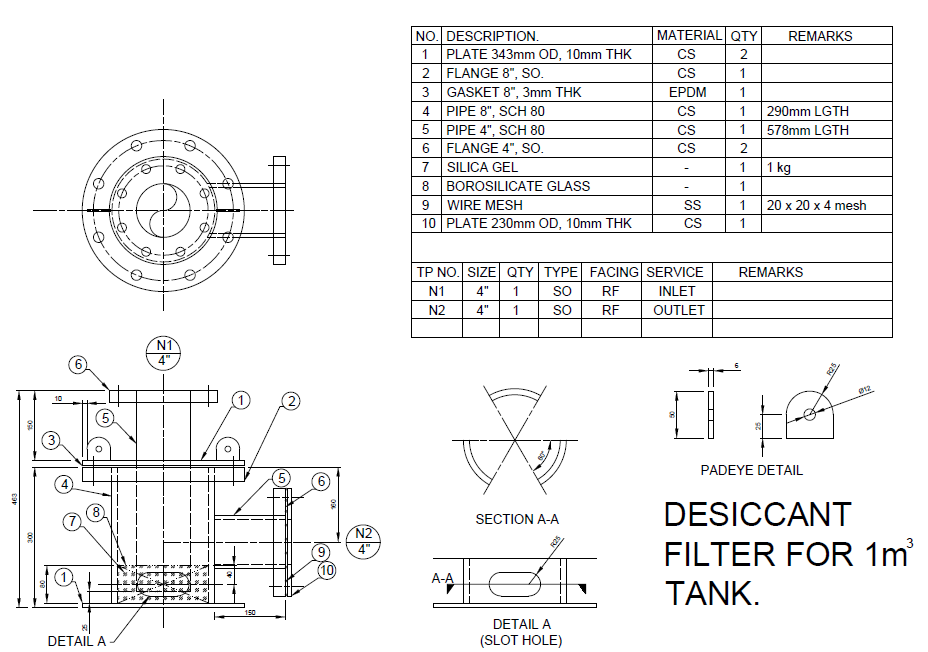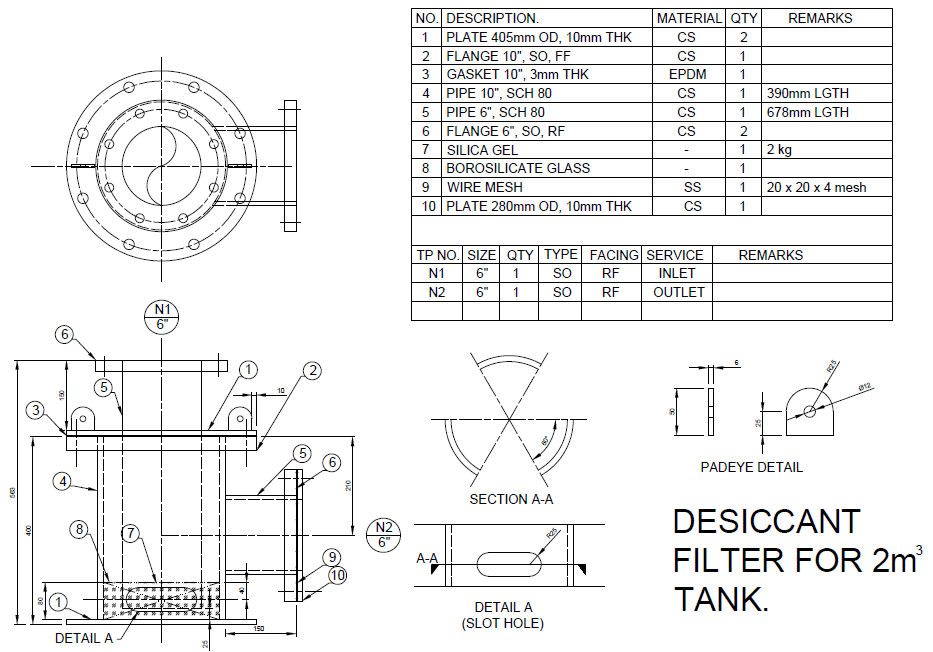PROBLEM STATEMENT
In the process of filling or emptying an atmospheric chemical storage tank, it is important that adequate ventilation points are provided at the top of the roof tank to discharge or collect air.
During the process of filling a tank with liquid, displacement of air inside the tank occurs, which is normally termed as “out-breathing” whereas the process of emptying is accompanied by air ingress, known as “in-breathing”. Frequent changes in ambient conditions often result in out-breathing and in-breathing scenarios, and such situations tend to be worsen in high humidity environment.
As out-breathing occurs, chemical gases, i.e. sulfuric gas, may sometimes be discharged into the atmosphere, which pose harm to people and the environment. Besides, gases in the tank are likely to be accumulated in close proximity to the vent point hence resulting in corrosion in the particular area and prospectively forming explosive mixtures.
DESIGN
It is a common practice to have the vent being located at the highest point of a tank of which design is in accordance with the American Petroleum Institute (API) Standard 2000, Venting Atmospheric and Low-Pressure Storage Tanks. The vent size shall be at least as large as the filling or withdrawal connection, whichever is larger but in no case less than 1 1/4″ nominal inside diameter.

The vent is equipped with a “goose neck” or some other means to prevent the ingress of air or water into the tank. A bird screen is provided at the vent opening to prevent any entry of foreign insects, birds or objects into the tank. For vents with hazardous gases, a desiccant filter is attached to the goose-neck.
DESICCANT FILTER
Desiccant filter is a unique air filter and water vapor prevention system that refrains hazardous chemicals, i.e. concentrated sulfuric acid, from entering into a storage tank. It replaces the standard breather or ventilation system in practically all types of industrial equipment that contain hydrocarbon and other non-aqueous fluids. It also prevents contamination of products in storage tanks. The hygroscopic nature of concentrated sulfuric acid means that any moisture entering the tank will be rapidly absorbed into the acid. Over time, the top layer of acid will become more dilute and become more corrosive.
The size of the desiccant filter required to protect a storage tank is determined by the amount of air and the rate at which air enters the storage tank. Generally, the rate at which the air enters equals the tank pump-out rate; however, there is an exception. A large tank that is nominally empty can have air entering the tank faster than the pump-out rate due to temperature and pressure changes. The desiccant filter is normally sized to last from one to six months per charge.
Conventional vent ports or breather caps provide little or no protection. They are typically rated at a higher micron size and do not have means of capturing moisture. Retrofitting these ports with desiccant breathers will provide full time protection against uninvited contaminants of dirt and water.
Desiccant filter is filled with a water adsorbing agent that traps and adsorbs moisture contained in the air that passes the filter. The desiccant in this filter attracts and holds onto water molecules. A single grain of silica gel is able to adsorb 40% of its weight in water. It also removes moisture from within the reservoir as the unit breathes out. As the tank heats up, water contained within the tank becomes water vapor. As the vapor is forced out through the breather, it is removed by the drying agent.
SIZING
At the maximum filling or pump-out rate, the dryer system including vent piping should not create a high differential pressure that exceeds the design pressure or vacuum pressure of the tank. Therefore, it is important to size the dryer for the maximum in-breathing and out-breathing rates.


A tank that averages half full for a month will breathe 60% of its volume per month with a 11.1°C (20°F) temperature change from day to night. Each 5.6°C (10°F) increase or decrease in the temperature differential adds or subtracts another 30% to the volume.
BENEFITS
- Elimination of water contamination through the desiccant filter
- Removal of water contamination in the tank
- Prevention of rust and corrosion due to moisture ingress
- Prevention of contamination from entering
- Extended tank life span
KEY FEATURES
- Quick and easy to install
- Visual color change indication
- Resilient polycarbonate or glass sight window
- Available in floor and wall mounting
- Refillable
SYNERGY’S EXPERIENCE
Synergy Engineering has studied, designed and constructed a filter with functions similar to a desiccant filter and has installed it on the project’s sulfuric tanks.
